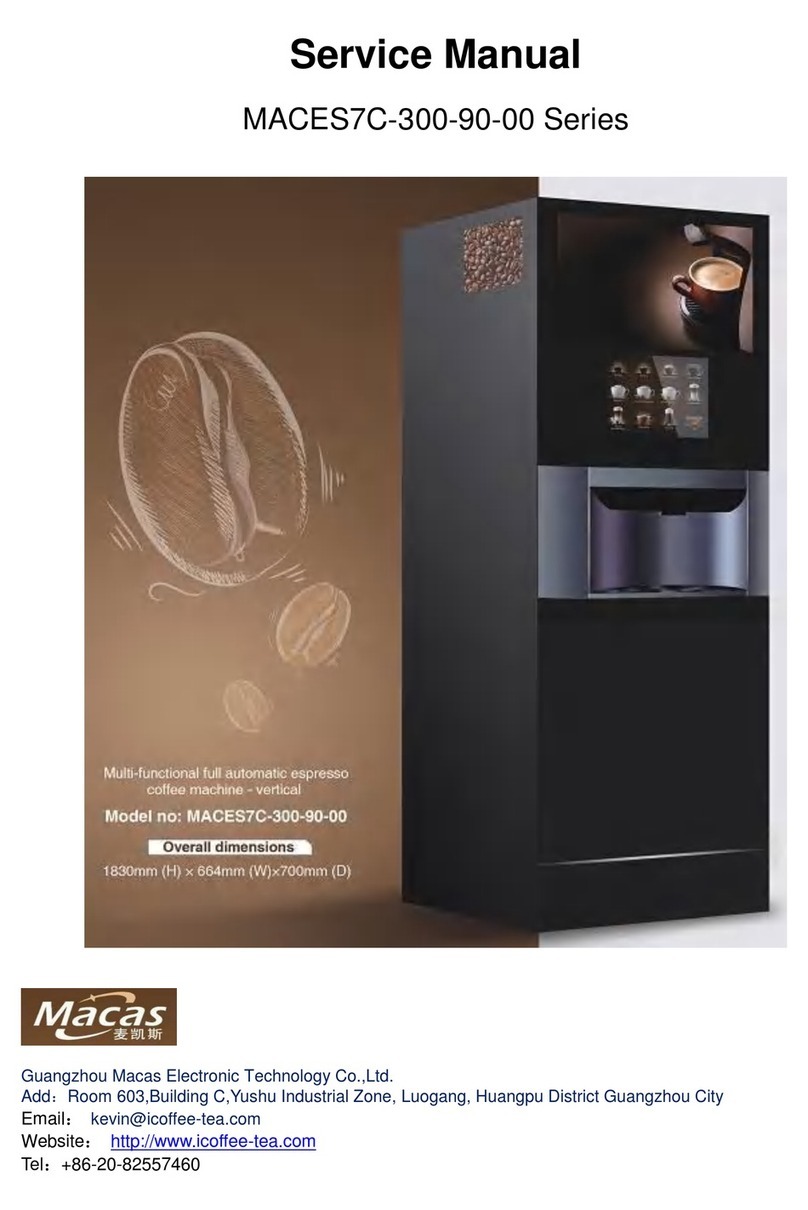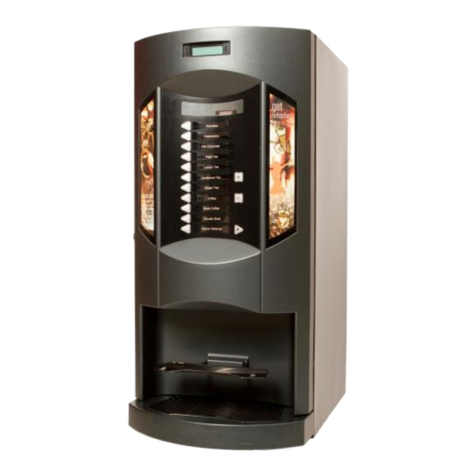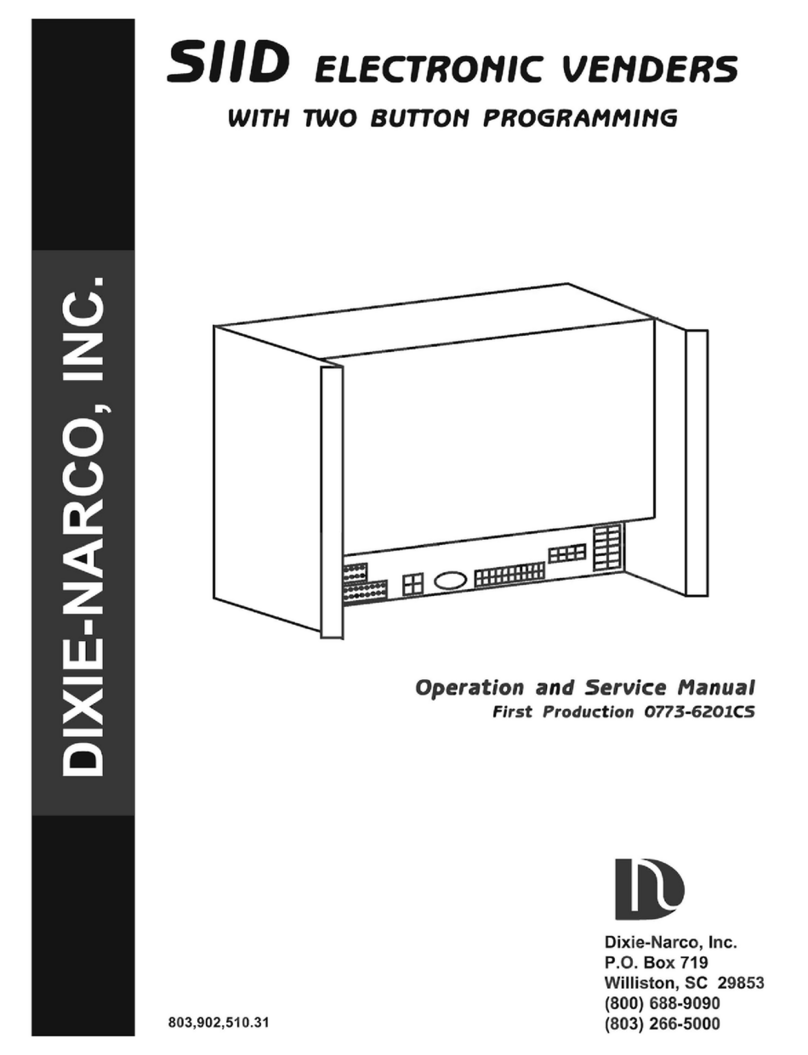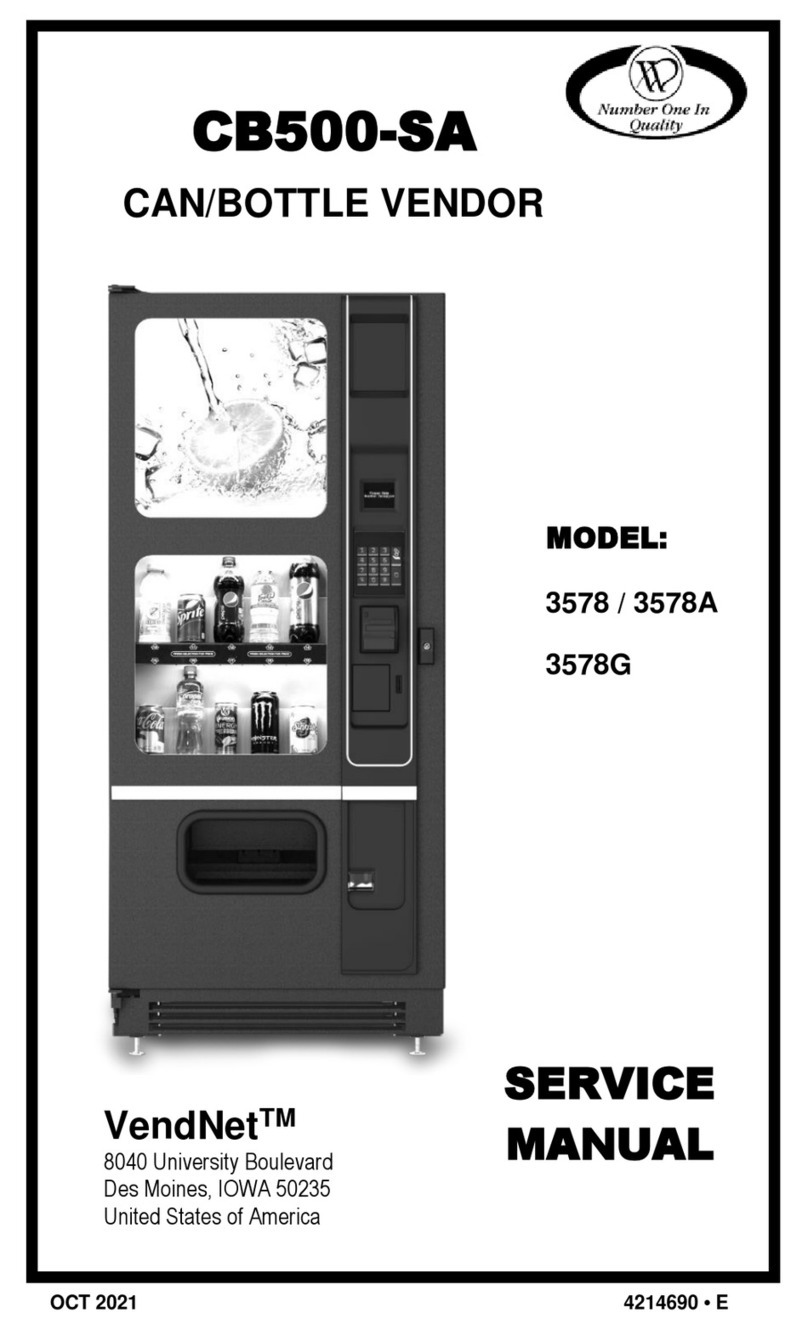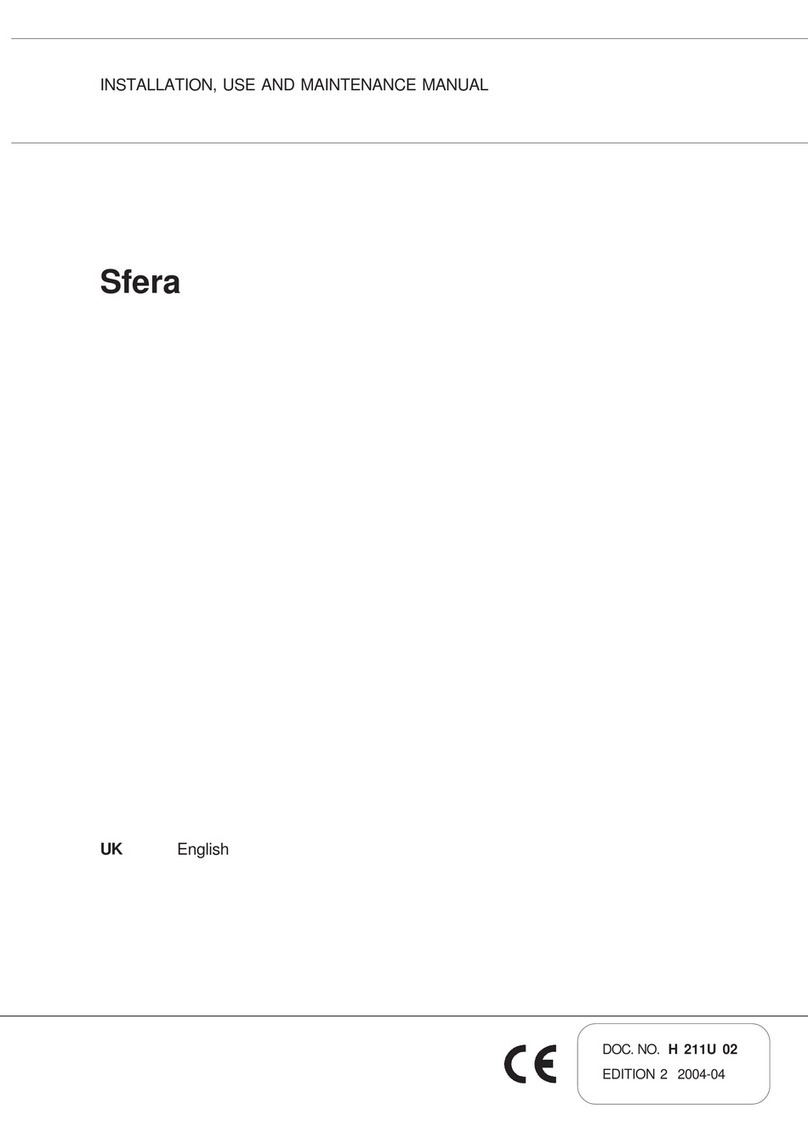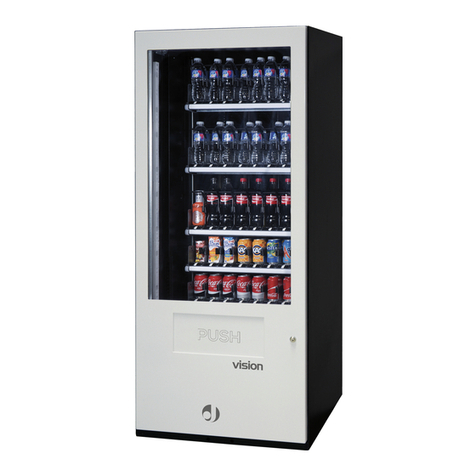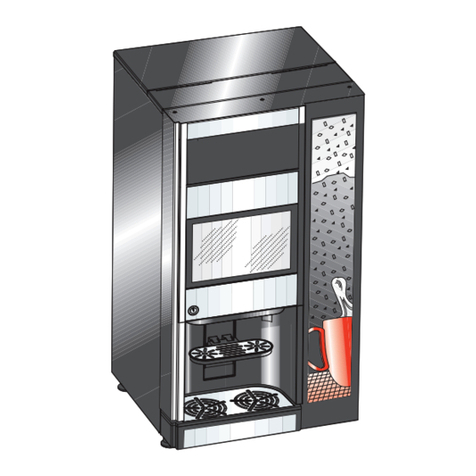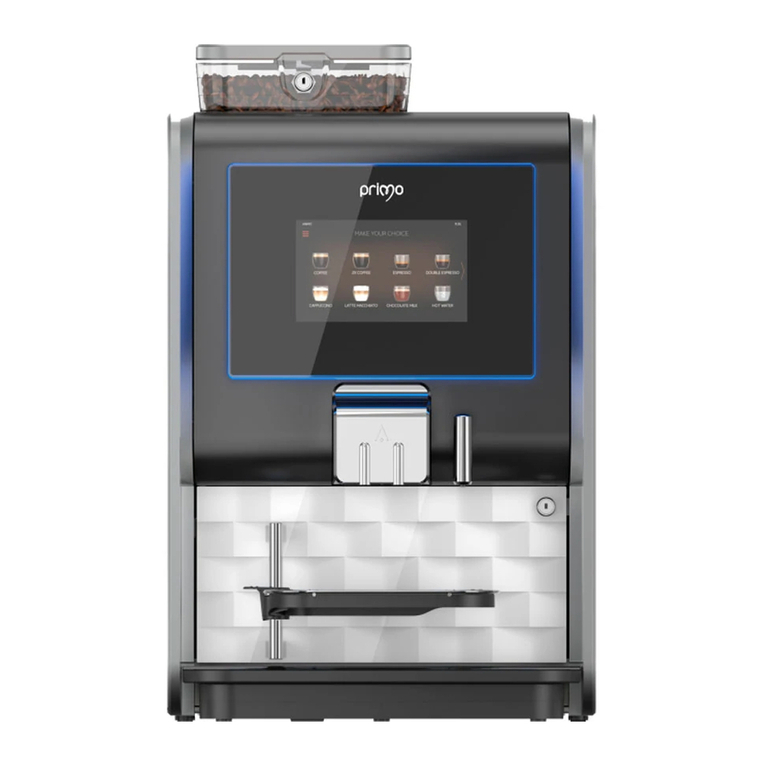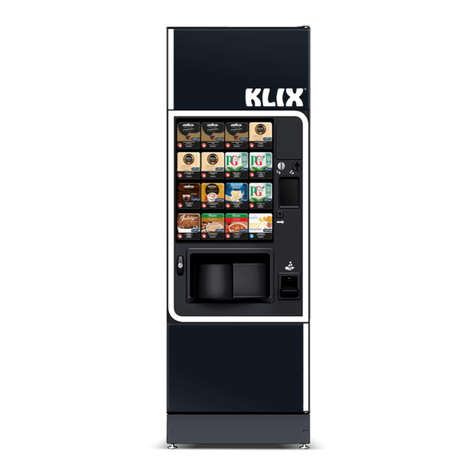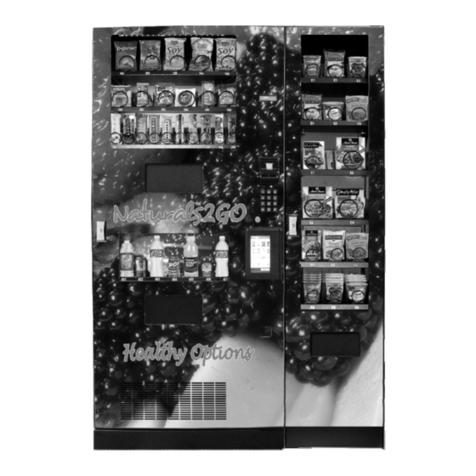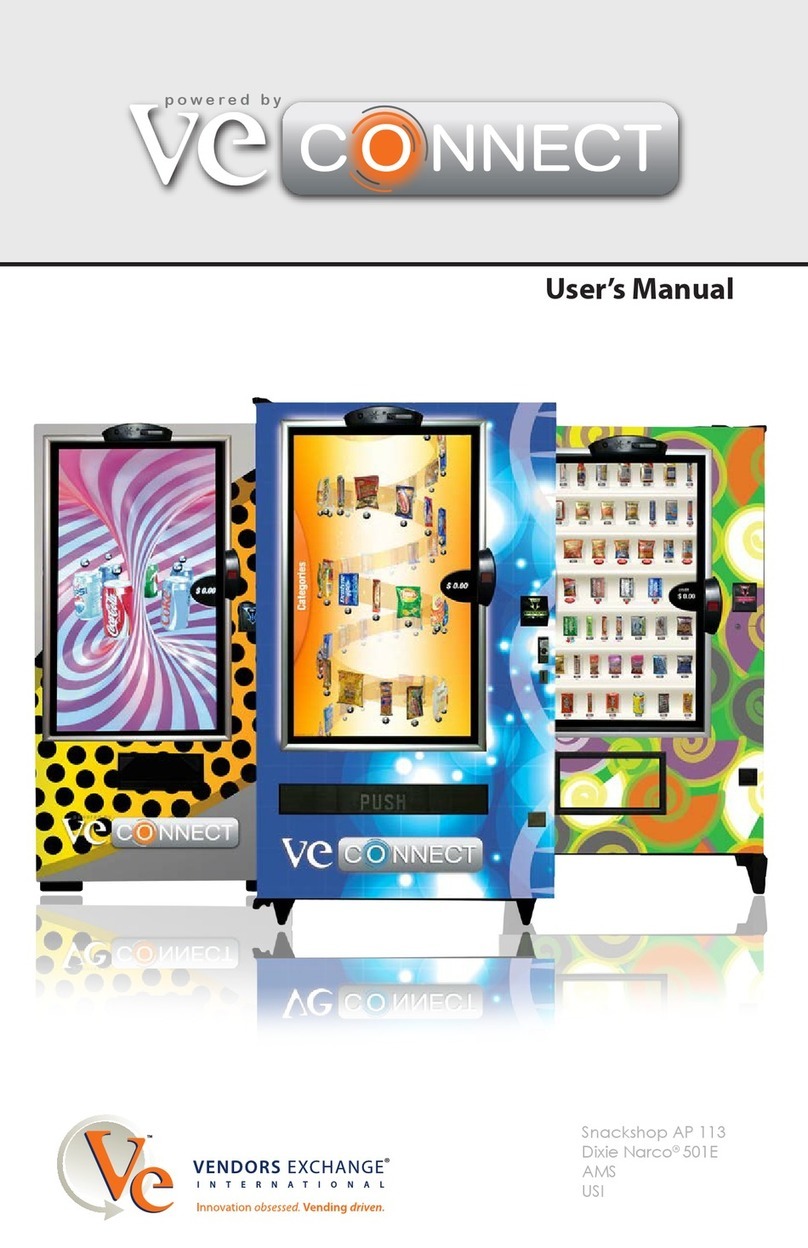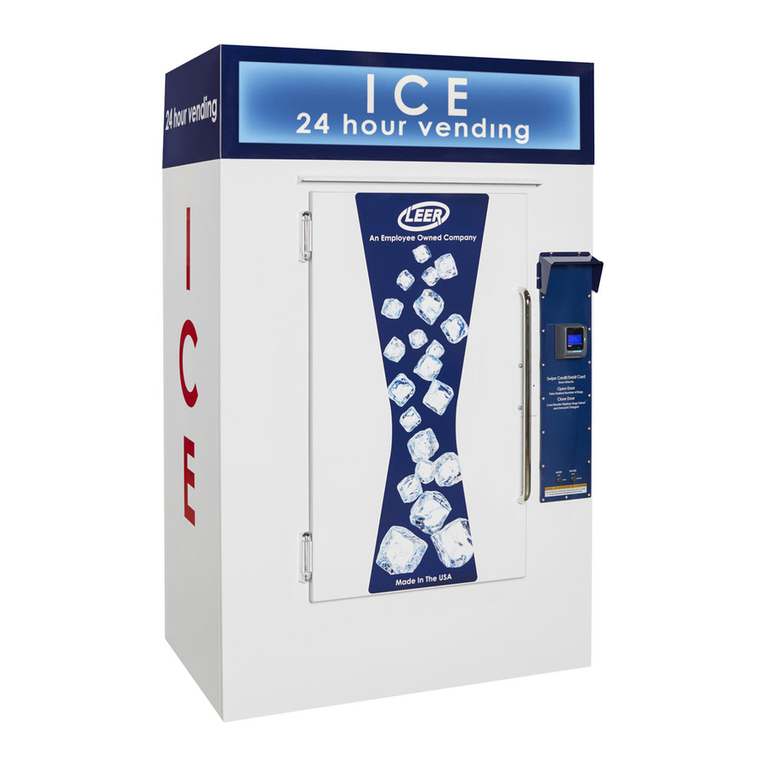
[5]
System will calibrate and should display “0”
16. Return the MODE key to the ‘RUN’ position.
Test Transactions:
17. Load a few bags of ice in the Vending Machine.
18. Verify that the displays correct bag size and
price is displayed.
19. Perform a test transaction and verify the
transaction processed successfully.
20. Contact Vendnovation and have the Vending
Machine unit linked to live credit card account.
Call 425-637-2344
End of Vending Setup Instructions
Installation Location:
The Vending Machine should be located on a solid
level base and must be level to operate properly. If
the Vending Machine is exhibiting a slight forward
lean, the front of the cabinet should be blocked to
bring the cabinet to a level position. A unit that is
not level could result in ice buildup due to improper
water drainage during the defrost cycle.
In vending units, improper leveling may cause
inaccurate weight measurements. Contact on any
part of the Vending Machine other than the skid
plates and/or leveling kits will result in inaccurate
weight measurement.
Leveling Kits No. 1050019, are included
and must be installed by customer to qualify
for NSF approval.
The installation location must also provide good air
flow for the designed refrigeration system to
operate efficiently. WARNING: DO NOT block
the refrigeration grill openings. Grill blockage may
result in compressor failure.
When placing the Vending Machine, there should
be a minimum of 3 inches of air space between all
sides of the cabinet and any surrounding structures.
This air space allows for air flow over the surface of
the cabinet, thus reducing condensation and aid in
the drying of these surfaces. The 3 inch space
behind the Vending Machine will also help ensure
that the evaporator drain tube, which exits the back
wall, is not being restricted or blocked during the
defrost cycle.
Locate the Vending Machine so that the main power
cord is within reach of an electrical outlet.
WARNING: DO NOT use extension cords as they
decrease the voltage to the unit and ultimately cause
compressor failure.
Outdoor Vending locations shaded from sunlight
are recommended for more economical operation.
Electrical Supply:
NOTE: Electrical and refrigeration repair work
should be done by licensed professionals.
The Vending Machine must be plugged into a 115
volt, 60 Hz grounded electrical outlet with a circuit
fuse or breaker rated at a minimum of 15 Amps.
The electrical service connections to the Vending
Machine must be a dedicated line and compliant
with national electric code and local codes that may
apply. DO NOT use extension cords. Some models
are equipped with a main power switch. If so
equipped, make sure the switch is in the OFF
position before plugging the merchandiser into the
outlet. Plug the merchandiser power cord into the
lower receptacle of the electrical outlet. Turn the
switch if equipped into the ON position. After a few
seconds delay, the compressor and the condenser
fans should start. The evaporator fan motors and the
light fixture should start immediately when power is
applied. The condensing unit will continue to run
until the air temperature in the cabinet reaches +16
degrees F.
WARNING: Operating more than one appliance on
the same circuit may result in voltage fluctuations
when both appliances are operating simultaneously.
This voltage fluctuation may lead to premature
compressor failure.
Information regarding the electrical voltage and
frequency being supplied to the Vending Machine
can be found on the Vending Machine’s serial data
plate typically located at the upper left hand corner

